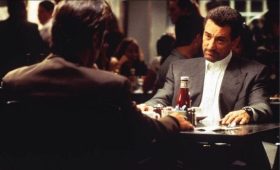In our digitally dominated, time-poor world, reading for pleasure can be seen as an outdated and irrelevant activity. But during the recent circumstances in which we’ve found ourselves, many of us have rediscovered and enjoyed such activities – whether it’s a jigsaw puzzle, a walk in the park, dressing up, growing vegetables, baking, craft, or, yes, reading a book. These offline pursuits feel calming, and for many serve as a reminder of simpler, safer times.
Young people have slowed down, too. They’ve had more free time, and gone are the extracurricular activities that often crowd their weekday afternoons and weekends. Parents observing them at home have encouraged regular time away from the screen, and some kids have picked up a book for the first time in, well, a long time. Book sales in particular areas of the market have risen, and some parents are noticing that their children are reading. For pleasure.
Hooray! But how can we nurture and maintain this habit once the school routine returns, and basketball, footy training and Kumon start up again?
School libraries to the rescue?
As a Victorian resident, it feels sadly ironic to suggest that going back to school may well result in less reading for pleasure. But unlike the situation in some other Australian states, qualified teacher-librarians here are a dying breed. Time after time I have visited suburban primary schools where there is no teacher-librarian, and sometimes no library, or a poor attempt at one in a dusty classroom down the end of the corridor. Many teachers are doing everything they can to establish classroom libraries, and encourage the children in their reading, but there’s only so much they can do on top of their already toppling workload. Ditto schools with limited budgets who have to cut something from somewhere. In Victoria, the lack of teacher-librarians also contributes to the education divide growing further, as many private schools have a teacher-librarian (or two, or a team) and a well-stocked, comfortable library.
I find this eternally frustrating because the data is clear. There’s now fifty years of research. Why is the teacher-librarian role seen as some kind of added extra, when reading benefits every single aspect of a child’s development? Not just student literacy, but the development of their whole person. I won’t bore you with the stats, suffice to say that reading enjoyment has been reported as more important for children’s educational success than their family’s socio-economic status (OECD, 2002). And that reading voluntarily, especially fictional works, is increasingly proven to be a way of improving empathy and giving insight into the view of others and human nature in general.
Reading to build empathy, imagination and hope
To the young people around me, the world feels divided, chaotic, isolating, and overwhelmed with challenges. Surely the act of reading has never been so vital for their psychological, emotional and social wellbeing. They will need all that reading offers as they navigate an uncertain future. They will need to step back from the real world to try to make any sense of it. Reading can help.
Leaders of the future will need imagination. Reading, particularly reading fiction, boosts imagination. It’s like an energy drink for the imagination!
Reading fiction lessens loneliness, reduces anxiety, and gives a sense of connectedness. As C.S Lewis may or may not have said, ‘We read to know that we are not alone.’
We read to discover empathy, and we are a society starving for empathy right now.
I believe that young people read to know that hope endures. As a writer for this readership, I don’t shy away from difficult circumstances; children sometimes have to bear tragedy, but some form of hope always remains. A character may emerge with integrity, despite all that may happen to her. This encourages the young reader to face the world with courage, to develop her own inner strengths.
Reading fiction lessens loneliness, reduces anxiety, and gives a sense of connectedness. As C.S Lewis may or may not have said, ‘We read to know that we are not alone.’
Young people are also facing the challenges of their culture being dominated by social media. Reading fiction is imagining yourself in someone else’s shoes, or, as Elizabeth Jolley eloquently put it, ‘trying on another life for size’. The culture of social media so often feels like the opposite of that, it being about the superficial affirming of one’s identity and not seeing the other party as anything more than a projection. Humility and empathy tend to be rare in the online world; it can feel like a narrative of negativity, conflict, dogma. This is difficult enough for adults, but for young people with limited experience in relationships, a world-view commensurate to the time they’ve existed on this earth, and still exploring their identity, it’s dangerous. Characters in good fiction are nuanced, complex, uncertain, unsure, like all of us. Identities in social media tend to be polarised, simplistic, rigid. At its worst, it rids us of our humanity.
Thinking about this, I was reminded of a passage in Ian McEwan’s book Atonement, when he speaks of 13-year-old Briony’s epiphany about the act of writing: ‘There did not have to be a moral. She need only show separate minds, as alive as her own, struggling with the idea that other minds were equally alive. It wasn’t only wickedness and scheming that made people unhappy, it was confusion and misunderstanding; above all, it was the failure to grasp the simple truth that other people are as real as you. And only in a story could you enter these different minds and show how they had an equal value. That was the only moral a story need have.’
It’s always been important, but in our post-truth world it feels more important than ever for young people to be equipped with the tools to understand complexity of ideas, of people; to imagine how someone else might make sense of something, be it a situation, a social or cultural structure, an aspect of history, or an individual’s behaviour.
Reading fiction can help with that.
Jane Godwin’s latest book When Rain Turns to Snow is out now from Hachette Australia.





